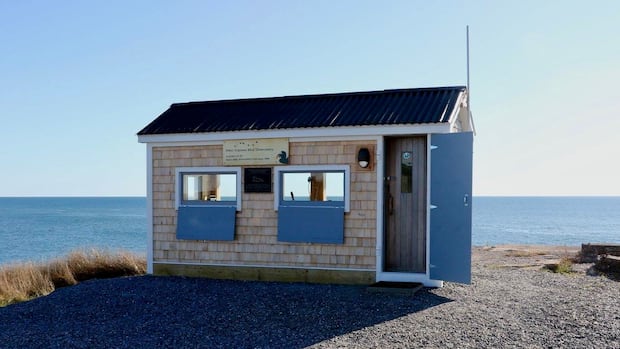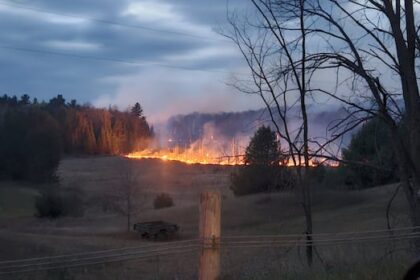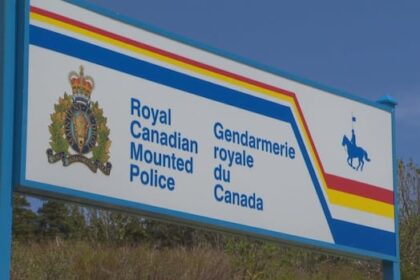New BrunswickThe Point Lepreau Bird Observatory is marking 30 years of monitoring the seabird migration in a location perfectly positioned to capture the entire migration pattern of more than 100 different species. Point Lepreau Bird Observatory providea early warning sign for changes in the ArcticAllyson McCormack · CBC News · Posted: Nov 23, 2025 5:00 AM EST | Last Updated: 2 hours agoListen to this articleEstimated 6 minutesThe audio version of this article is generated by text-to-speech, a technology based on artificial intelligence.The Point Lepreau Bird Observatory was established in 1995 to monitor seabird migration. (Saint John Naturalists Club )Sitting inside a small cedar shake structure with panoramic views of the Bay of Fundy, Jim Wilson is in his happy place. The lifelong birder and chair of the Saint John Naturalists Club is one of the co-founders of the Point Lepreau Bird Observatory, established in 1995 to monitor seabird migration. What started out as a hobby, soon ballooned into a busy pastime. One that Wilson calls “exhilarating.”“We’ve had as many as 8,000 birds an hour go by the point headed north in the spring,” he said. “And they’re moving at about 60 kilometres an hour on average … and you’re trying to count and you want to be as accurate as you can because this is scientific research information that we’re gathering.”That research is gathered every spring and fall and shared with the Canadian Wildlife Service. Scientists can then use the data to plot trends about seabird and sea duck populations, peak passage times and to better understand environmental impacts. Now, the club is marking 30 years of those efforts, looking back on more than a million birds — and counting.Bird counters have seen as many as 8,000 birds an hour go by the Point Lepreau bird observatory in the spring. (Submitted by Nancy Hamilton)“We’ve seen about 114 species of birds pass by the point during the 30 years,” Wilson said, with the most abundant species being black scoter and surf scoter. Altogether, the group has counted about 1.7 million birds, he said. The Saint John Naturalists Club monitors the migration in a sampling method of four-hour blocks, counting for 15 minutes at a time, followed by a 15-minute break. That’s been enough to observe an abundant number of birds funnelling through the mouth of the Bay of Fundy. But the quick calculations aren’t always easy.“If it’s a small flock, you know, 1234567, then pretty soon you’re counting 10, 20, 30, 40. And pretty soon if you get a big number, you’ve got 100, approximately 200, 300 and maybe even 1000 at a time.”Wilson said they now have volunteers who have been doing the job for years — and they’re good at it. Birds a bioindicator speciesThat includes Julie Bauer, a volunteer turned program co-ordinator for the Saint John Naturalists Club. She said prior to the observatory’s existence, the birds were difficult to study, which meant missing out on a lot of important information.“Birds are a bioindicator species,” she said. “That means that they can tell us earlier … if the environment is changing.”She said the birds breed in the Arctic, and when the climate there changes, so does their habitat and population.“The [North and South] poles are accelerating climate change a lot faster than more southerly parts of the Earth. So basically the changes would be noticed sooner up there in the Arctic, than they would be down here.”Saint John birder and naturalist Jim Wilson has been watching the seabird migration for three decades. (Saint John Naturalists Club )Bauer said any changes would be reflected in their population “and that would be something we would be able to notice” at the observatory.Wilson said their lookout location is also in a prime place at the northern end of where all the seabirds and sea ducks winter, allowing them to capture the entire migration pattern.“It is the most prominent point of land, so birds coming north in the springtime especially tend to fly right past the tip of the point,” he said. “We have the ability, theoretically at least, to have virtually almost all seabirds and sea ducks that nest in the Arctic pass by us year after year after year in the spring,” he said. “So we count with the same dates in the same way with the same people at the same spot every year.”Oil tanker sparks idea for observatoryWilson said the idea for the observatory came from a what-if scenario imagined while out with his friend, Dave McCurdy, who worked at the Point Lepreau generating station at the time.While watching thousands of birds passing overhead one day in April, Wilson said they noticed “an empty oil tanker coming down the bay from the Irving refinery.”Bird counters can sit inside the Point Lepreau Bird Observatory, sheltered from the wind and elements, to monitor the migration. (Saint John Naturalists Club)“And we looked at one another after a while seeing all these myriads of birds going by and we thought, what if there was an oil spill, an accidental or small or large oil spill? What would be the impact on all these birds? We have no idea how many are going by. We really have no idea of the species for sure.”Wilson said that prompted the pair to begin monitoring the birds from their car, which eventually blossomed into Point Lepreau Bird Observatory.Volunteers welcomeThe Saint John Naturalists Club has a few hundred volunteers, but with an older demographic, Bauer said they are always looking for more people to join. “Currently, the core group of volunteers we have are aging and looking to retire from volunteering,” she said. “So we’re always welcoming new volunteers and you can be anywhere in age, anywhere in experience level.”Bauer said they usually have a workshop in the spring where new volunteers are paired with experienced bird counters. She said it’s as much about community as it is about conservation. Jim Wilson and Julie Bauer of the Saint John Naturalists Club monitor the seabird migration from inside the Point Lepreau Bird Observatory. (Saint John Naturalists Club)“Not only from a scientific perspective is this important, but also to have the observatory with all of the volunteers and the community that it brings together is also really exceptional too,” she said. “It’s wonderful to be able to join with other people who are interested in this and be able to experience this beautiful migration that you get to see every spring. So it’s more than just data collection and for science, it’s also really enriching and rewarding as a volunteer.”ABOUT THE AUTHORAllyson McCormack is a producer with CBC New Brunswick, based in Fredericton. She has been with CBC News since 2008. With files from Information Morning Saint John
Saint John bird observatory marks 30 years and 1.7 million seabirds












